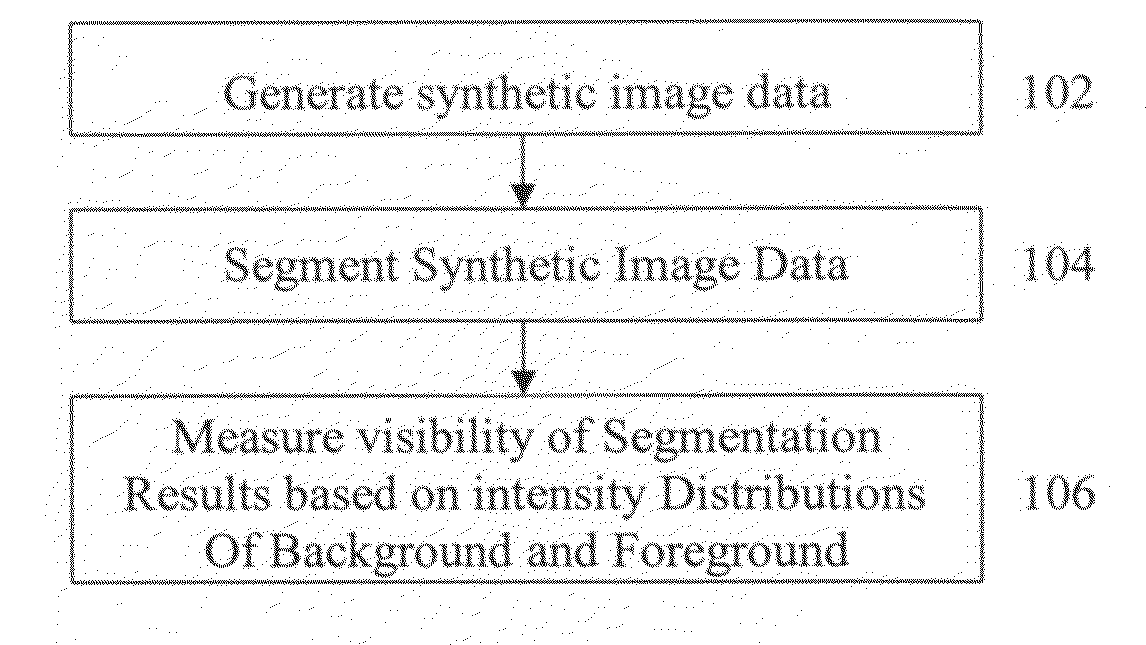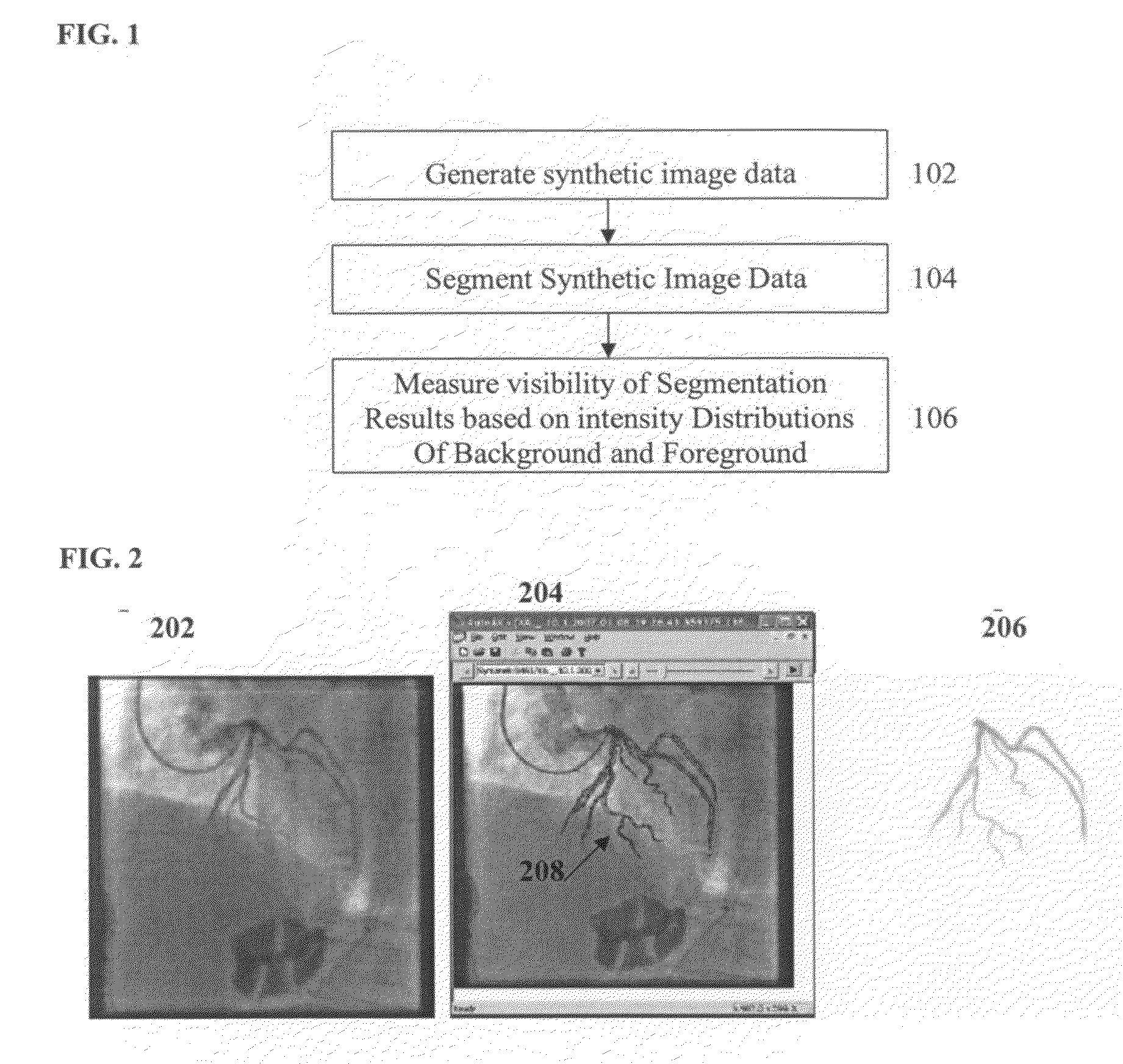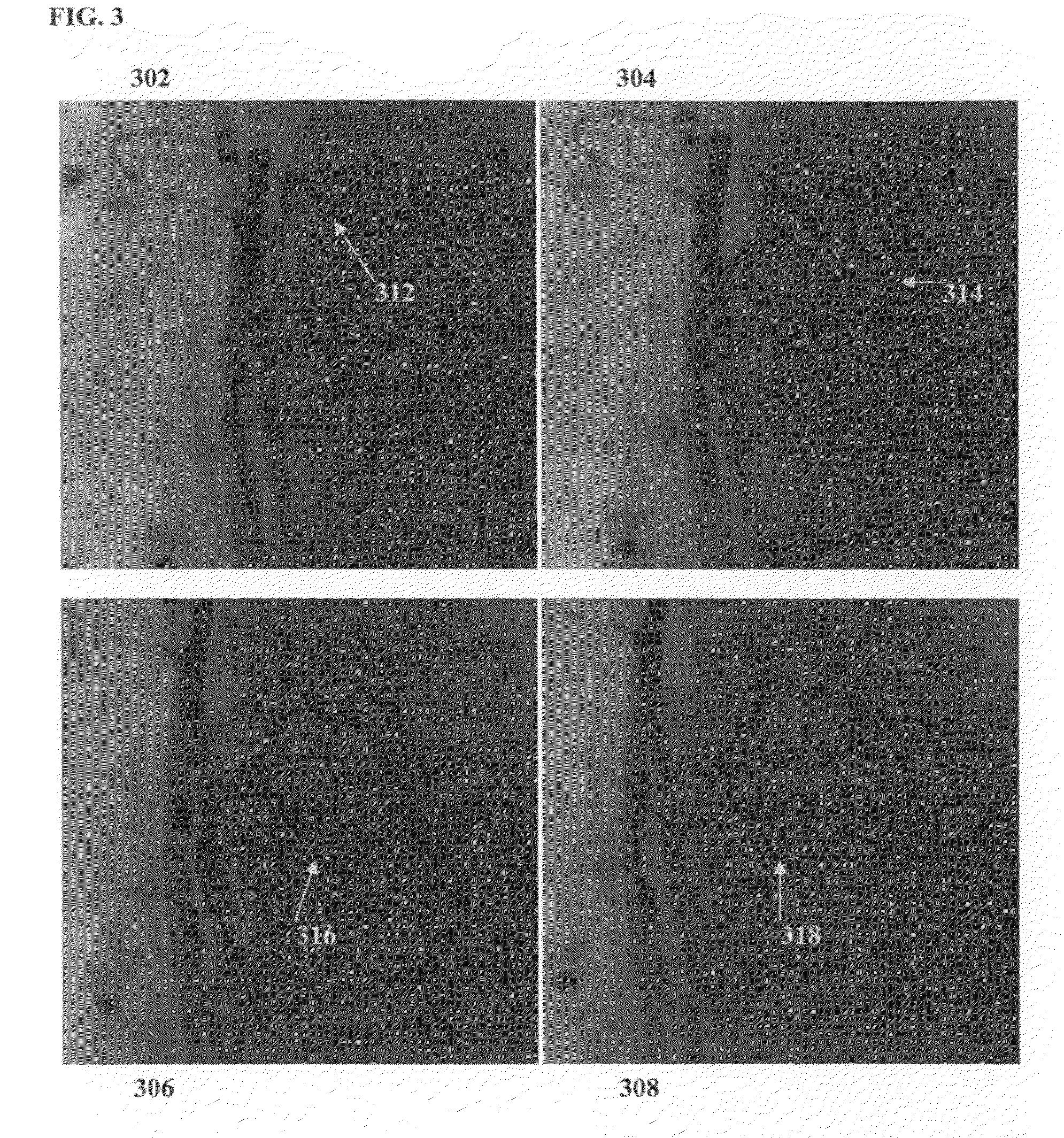Method and system for evaluating image segmentation based on visibility
a technology of image segmentation and visibility, applied in image enhancement, instruments, applications, etc., can solve the problems of blood filled structures that cannot be differentiated from surrounding tissue using conventional radiology, information that is difficult to decipher, and no quantitative measurement of visibility that can be used to evaluate segmentation techniques
- Summary
- Abstract
- Description
- Claims
- Application Information
AI Technical Summary
Problems solved by technology
Method used
Image
Examples
Embodiment Construction
[0026]The present invention is directed to a method for evaluating image segmentation based on visibility. Although embodiments of the present invention described herein are directed toward evaluating segmentation of fluoroscopic images, the present invention is not limited thereto, and may be similarly applied to segmentation of other types of images, such as computed tomography (CT), magnetic resonance (MR), and ultrasound images. Embodiments of the present invention are described herein to give a visual understanding of segmentation evaluation method. A digital image is often composed of digital representations of one or more objects (or shapes). The digital representation of an object is often described herein in terms of identifying and manipulating the objects. Such manipulations are virtual manipulations accomplished in the memory or other circuitry / hardware of a computer system. Accordingly, is to be understood that embodiments of the present invention may be performed withi...
PUM
 Login to View More
Login to View More Abstract
Description
Claims
Application Information
 Login to View More
Login to View More - R&D
- Intellectual Property
- Life Sciences
- Materials
- Tech Scout
- Unparalleled Data Quality
- Higher Quality Content
- 60% Fewer Hallucinations
Browse by: Latest US Patents, China's latest patents, Technical Efficacy Thesaurus, Application Domain, Technology Topic, Popular Technical Reports.
© 2025 PatSnap. All rights reserved.Legal|Privacy policy|Modern Slavery Act Transparency Statement|Sitemap|About US| Contact US: help@patsnap.com



